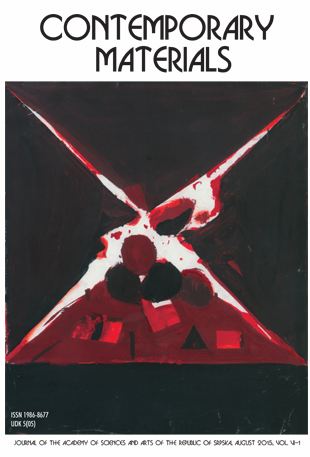PHOTOCATALYTIC ACTIVITY OF ZnO AND TiO2 TOWARDS EFFECTIVE DEGRADATION OF CEFOPERAZONE
DOI:
https://doi.org/10.7251/COMEN2202133SAbstract
Cefoperazone belongs to the third generation of cephalosporin antibiotics. It is accumulated in water due to its overuse and causes bacterial, environmental, and health issues. In this work, the efficiency of photocatalytic degradation of cefoperazone was studied using different types of radiation (simulated solar, UV, and LED) in the presence of different nanomaterials (ZnO and TiO2). First, the photolytic degradation of cefoperazone was examined, where UV radiation showed as most effective for cefoperazone degradation, wherein 29.5% of cefoperazone was degraded after 60 min. Photocatalysis in the presence of TiO2 leads to complete removal of cefoperazone after 30 min, while the use of ZnO leads to complete photocatalytic degradation of cefoperazone after 20 min using UV radiation. Simulated solar and LED radiation showed slightly lower efficiencies. When TiO2 was applied, the removal efficiency was around 60%, while approximately 70% of cefoperazone was degraded when ZnO was used.
